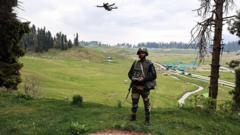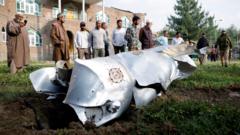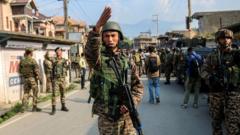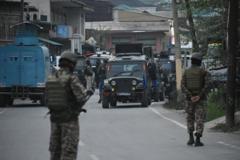The picturesque region of Kashmir, often celebrated for its natural beauty, has tragically been thrust into the headlines once again following a brutal terrorist attack that claimed the lives of 26 innocent people. This heinous event has intensified the long-standing feelings of marginalization among the local population, who have lived under strict surveillance and limited political freedoms for years.
Kashmir: A Beautiful Land Scarred by Terrorism

Kashmir: A Beautiful Land Scarred by Terrorism
The recent terrorist attack in Kashmir reveals the deep-rooted issues of alienation and oppression in the region amid a contrasting narrative of tourism and development.
Kashmir's complex history, marked by the ongoing conflict between India and Pakistan, paints it as one of the most volatile regions globally. Since 2019, the Indian government, led by Prime Minister Narendra Modi, has intensified its control over the territory, leading to increased militarization and a narrative of development and security that contrasts sharply with the experiences of its inhabitants.
While the government boasts of significant tourism expansion, drawing millions of visitors annually to its stunning landscapes, locals share a different story—one of despair and disillusionment, especially following last week's violence. The Indian military's response to the attack has included a sweeping crackdown, characterized by widespread detentions of local citizens and the demolition of homes belonging to suspected individuals tied to the attack. Such measures have sparked widespread fears of retribution within the Muslim-majority community and reflect the growing sense of alienation amidst a backdrop of burgeoning tourism.
As Kashmir grapples with its struggles for survival and dignity, the recent tragedy serves as a critical reminder of the challenging juxtaposition between idyllic beauty and the harsh realities of conflict and distrust.
While the government boasts of significant tourism expansion, drawing millions of visitors annually to its stunning landscapes, locals share a different story—one of despair and disillusionment, especially following last week's violence. The Indian military's response to the attack has included a sweeping crackdown, characterized by widespread detentions of local citizens and the demolition of homes belonging to suspected individuals tied to the attack. Such measures have sparked widespread fears of retribution within the Muslim-majority community and reflect the growing sense of alienation amidst a backdrop of burgeoning tourism.
As Kashmir grapples with its struggles for survival and dignity, the recent tragedy serves as a critical reminder of the challenging juxtaposition between idyllic beauty and the harsh realities of conflict and distrust.





















